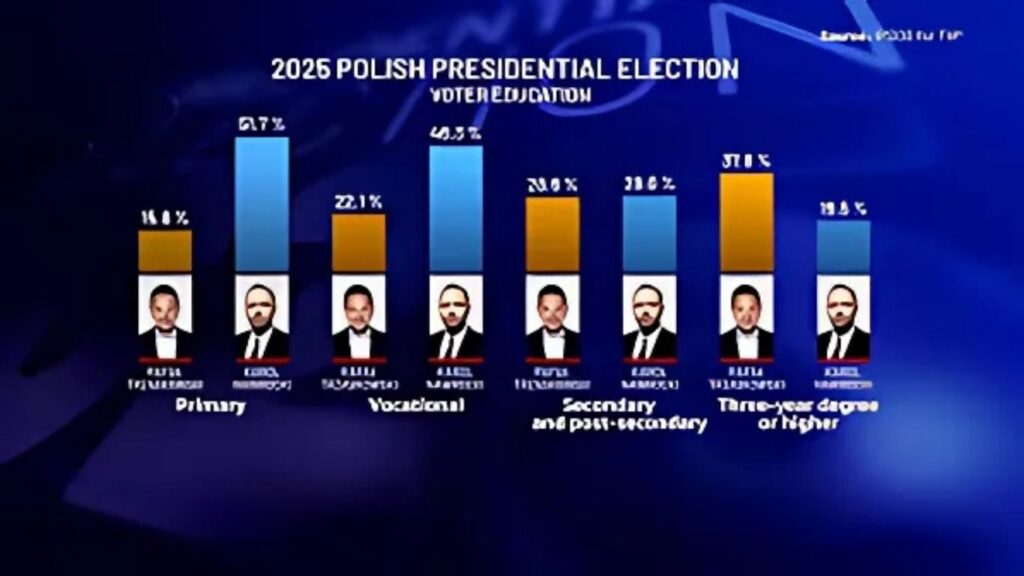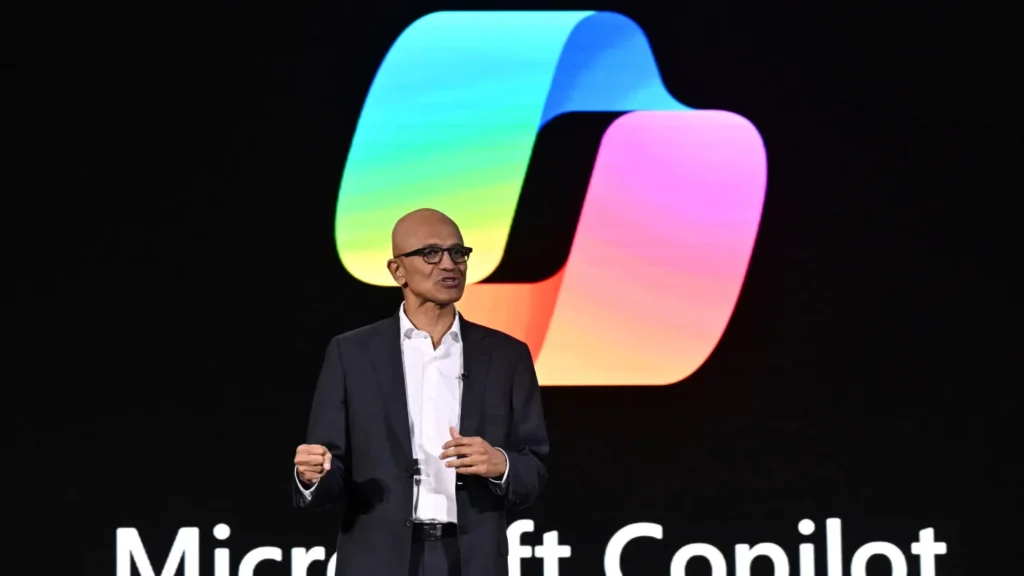In a pivotal moment for Central Europe, Polish citizens have made their voices heard by electing Nawrocki, a bold and dynamic leader, as the President of Poland. But this victory is more than just a political shift, it’s a symbol of how modern technology is deeply intertwined with the democratic process.
From cybersecurity to artificial intelligence (AI), big data analytics to digital campaigning, the election that brought Nawrocki to power illustrates how tech is no longer a side story in politics, it’s the main narrative. In this blog, we explore the behind-the-scenes technology that influenced voter behavior, protected ballot integrity, and empowered campaigns to connect with citizens like never before.
The Digital Face of Political Campaigns
Campaigning has evolved far beyond flyers, rallies, and television ads. The modern-day candidate is as much a product of analytics and algorithms as they are of ideology and rhetoric.
AI-Driven Targeting
During the 2025 election cycle, the Nawrocki campaign utilized AI-powered targeting systems to personalize messages for individual voter segments. By analyzing social media behavior, browsing habits, and public polling data, campaign strategists created profiles of likely supporters and undecided voters.
These AI systems used natural language processing to refine messaging across different demographics, rural farmers, urban tech workers, and first-time voters, ensuring that every ad, speech, and post resonated with its intended audience.

Social Media Influence: Algorithms, Outreach, and Engagement
The rise of social media has reshaped how voters engage with politics. Platforms like X (formerly Twitter), Facebook, Instagram, and TikTok were critical battlegrounds in the Polish election.
Deep Engagement Over Broad Reach
Instead of just maximizing views, the Nawrocki campaign prioritized engagement, quality retweets, shares, comments, and direct interactions. Posts included policy explainers, interactive polls, and even AR/VR filters aligned with national pride themes. Influencers from various sectors supported Nawrocki, organically boosting his digital presence.
Sentiment Analysis
Real-time AI sentiment tracking allowed campaign teams to monitor public reactions to Nawrocki’s speeches and announcements. If a message underperformed or sparked controversy, they could pivot quickly, ensuring the campaign remained agile and aligned with voter moods.
Cybersecurity: Protecting Democracy in the Digital Age
Elections worldwide face the threat of cyberattacks from misinformation to hacking attempts. Poland’s 2025 presidential election was no exception. But this time, Poland was prepared.
Digital Fortification
In anticipation of the vote, Poland’s National Cybersecurity Agency partnered with ethical hackers and tech firms to simulate attacks on the electoral infrastructure. These war games revealed vulnerabilities in vote-tallying systems and voter databases, most of which were patched before election day.
The Nawrocki administration-elect has already committed to expanding national cybersecurity efforts, promising a “Cyber Defense Shield” to protect not only elections but also banking, healthcare, and citizen data systems.
E-Governance and Digital Participation
Poland has been steadily investing in e-governance, and the Nawrocki campaign emphasized the expansion of digital public services.
Online Voting Trials
While full-scale online voting wasn’t yet implemented, several municipalities conducted successful pilot programs. These allowed registered citizens to vote via secure apps using biometric ID, verified through national databases.
Early analysis showed a 22% increase in voter participation in pilot regions, especially among young professionals, tech workers, and overseas citizens. Nawrocki has pledged to scale up this system by 2030.
Big Data and Voter Analytics
Data analytics played a pivotal role in identifying voter trends, swing regions, and turnout predictions. Every bit of data was fuel for strategic decisions.
Predictive Modeling
The Nawrocki team used predictive models to simulate electoral outcomes based on changing variables: unemployment rates, education levels, and even real-time inflation data. These models informed everything from speech topics to where the candidate should travel next.
Ethical Use of Data
While data was instrumental, Nawrocki made transparency a priority. His campaign published a “Data Ethics Charter” outlining how citizen data would be collected, anonymized, and used solely for political strategy not for commercial gain.
Digital Infrastructure in Rural Areas
One of the biggest challenges in Polish tech adoption is the digital divide, particularly between urban centers and rural regions.
Closing the Gap
Nawrocki’s campaign proposed a “Digital Poland” initiative, aimed at expanding high-speed internet to underserved areas. This move would enable more equitable access to education, telemedicine, and remote work opportunities, closing not just the tech gap, but the economic one too.
Misinformation and Fact-Checking
Elections in the digital era often face a flood of misinformation, both foreign and domestic. The 2025 race was no different, but what set it apart was how Poland responded.
Real-Time Fact-Checking Tools
Media outlets and independent watchdogs partnered to build AI-driven fact-checking tools. These tools scanned viral posts in real time, tagging them as verified or false. The Nawrocki team also ran an official “Truth Center” on its website, debunking rumors and fake news as they surfaced.
This commitment to transparency resonated with voters tired of clickbait and confusion, reinforcing Nawrocki’s image as a trustworthy leader.
Cloud Infrastructure and Election Management
With so much data flowing through electoral systems from voter registration to precinct reports, cloud platforms were central to managing this load securely and efficiently.
Scalable and Secure Solutions
Poland’s National Election Commission utilized scalable cloud services with built-in redundancy and disaster recovery. The cloud infrastructure enabled real-time updates on voter turnout, issues at polling stations, and early results.
AI-Assisted Log Analysis
To monitor for irregularities or potential fraud, AI tools analyzed millions of lines of log data from polling stations. Suspicious patterns were flagged for human review, ensuring both speed and integrity in the counting process.
The Human-Tech Partnership
While technology shaped the election, it was still people, campaign workers, IT engineers, data scientists, and volunteers who ensured things worked smoothly. Nawrocki’s win reflects not only digital strategy but also community coordination and civic enthusiasm.
Tech Volunteers and Hackathons
Leading up to the election, a series of civic tech hackathons were organized to develop solutions for voter accessibility, fraud detection, and political education. These events engaged thousands of young developers who contributed directly to Poland’s democratic infrastructure.
Many of these innovations are expected to continue under the Nawrocki administration.
Global Attention on Poland’s Digital Democracy
The international community watched closely as Poland’s election unfolded not just for its political implications, but for its pioneering use of technology.
A Model for Others?
Election observers from Germany, Canada, and Estonia noted the efficiency and transparency of Poland’s digital systems. Nawrocki has stated in interviews that he intends to collaborate with other nations to share best practices and develop international cyber standards.
This positions Poland as a leader in digital democracy, an evolution that could influence other countries still grappling with legacy systems and manual processes.
Tech Education and Future Policies
With Nawrocki in power, attention now turns to how technology will shape education, employment, and innovation policy.
National Tech Education Program
The new administration has unveiled plans for a National Tech Education Program that includes:
- Coding and AI in public school curricula
- Publicly funded online certifications
- Digital literacy programs for senior citizens
- Government-supported tech bootcamps in rural areas
By equipping citizens with future-ready skills, Nawrocki aims to foster a resilient and competitive digital workforce.
More Than a Win—A Digital Mandate
The election of Nawrocki is not just a story of political success it’s a powerful example of how modern technology can strengthen democratic processes. From AI-driven strategy and real-time analytics to cybersecurity infrastructure and digital inclusivity, this election redefined what’s possible when tech and democracy work hand in hand.
As Nawrocki prepares to take office, his bold, future-focused platform signals a continued investment in technology not just as a tool for governance, but as a foundation for national progress.
Key Takeaways
- Nawrocki’s campaign effectively used AI, data analytics, and social media to engage voters.
- Cybersecurity, cloud computing, and biometric systems ensured safe, transparent voting.
- Fact-checking AI tools helped combat disinformation during the election cycle.
- Digital participation increased voter turnout, particularly among youth and remote citizens.
- The Nawrocki administration plans to invest heavily in tech education, broadband access, and innovation hubs.
- Poland’s election process may serve as a model for other democracies facing the challenges of the digital age.
















